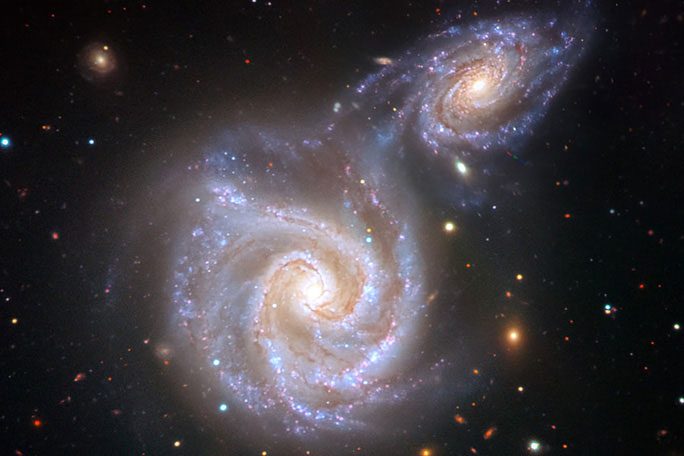A research team from Ohio State University (USA) has identified the origins of 100 rogue red giant stars in the monstrous Milky Way galaxy, which is the galaxy that contains Earth.
Many previous studies have demonstrated that the Milky Way is a formidable space monster, not only massive but also having consumed numerous other galaxies. The new research from Ohio State University has discovered a new victim: the ancient galaxy known as “Gaia Sausage.”

The massive Milky Way and the smaller “Gaia Sausage” are about to collide – (Graphic by the research team)
The article published in Nature Astronomy states that scientists have identified approximately 100 red giant stars that are the same age as the first native stars of the Milky Way but exhibit different movement patterns and compositions. These giant stars are remnants of the “Gaia Sausage” that was consumed 10 billion years ago.
According to Daily Mail, the Gaia Sausage galaxy (with Gaia being the name of the earth goddess in Greek mythology) has a mass 10 billion times that of our Sun. When it collided with the young Milky Way 10 billion years ago, it caused a great deal of chaos. The impact even caused the disk of the Milky Way to bulge and break, taking a considerable amount of time to recover. Debris from the collision spread out, contributing to the bulging of the galaxy’s center and the surrounding star clusters.
However, this catastrophic collision turned out to be beneficial for the Milky Way in an unexpected way. Dr. Fiorenzo Vincenzo, the lead researcher, stated: “The evidence we have gathered shows that when the merger occurred, the Milky Way formed a large population of its own stars.” In other words, the collision stimulated the star formation process of the Milky Way, aiding in its rapid growth.
To reach this discovery, the research team collected data from the APOGEE spectroscopic survey conducted at the Apache Point Observatory in New Mexico, from which they analyzed the chemical composition and dated the stars.
A study published in the Monthly Notices of the Royal Astronomical Society in December 2020 revealed that the “monster” Milky Way had consumed at least 16 galaxies during its formation, including large galaxies. Other studies predict that in about 2 billion years, a new collision will occur. The formidable future opponent is the massive Andromeda galaxy.





















































